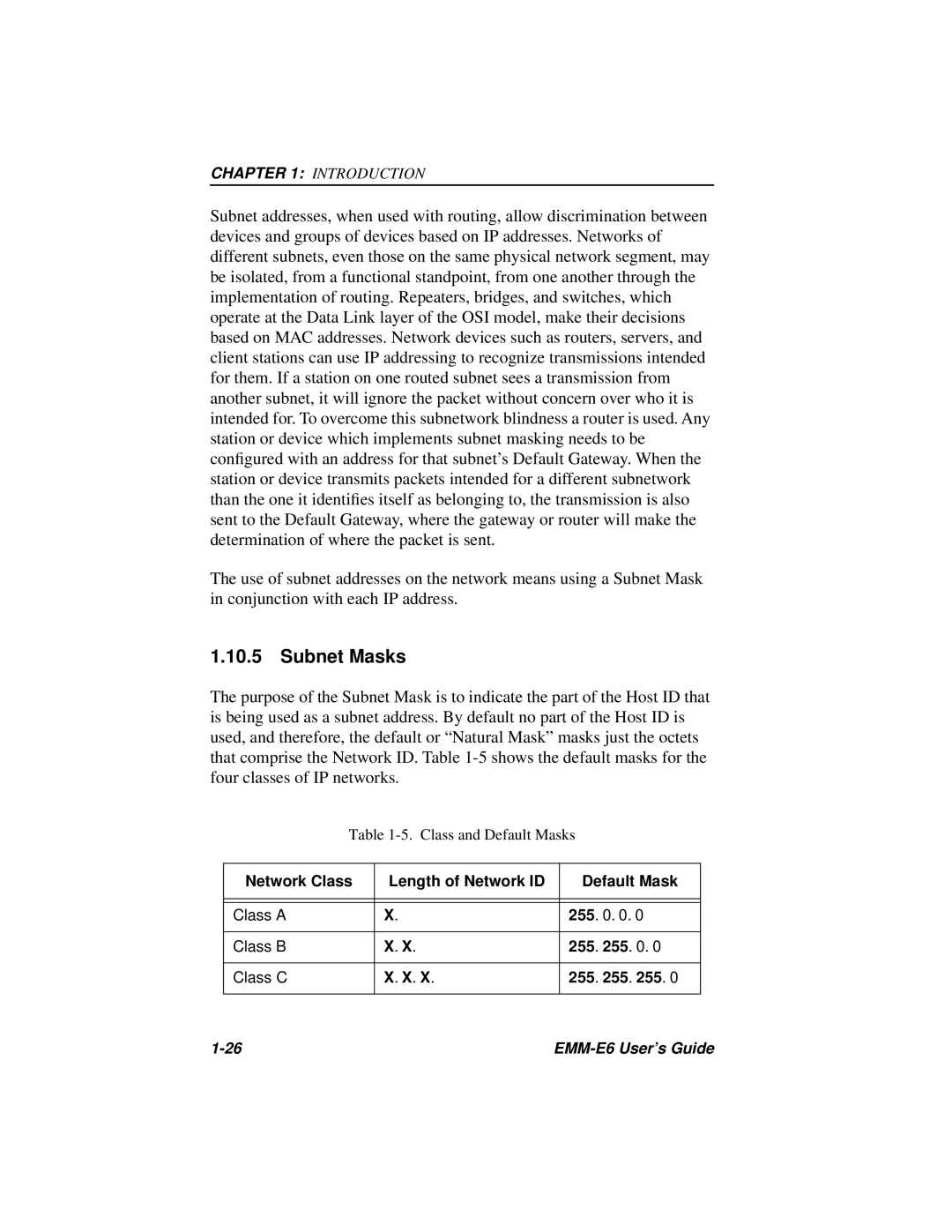CHAPTER 1: INTRODUCTION
Subnet addresses, when used with routing, allow discrimination between devices and groups of devices based on IP addresses. Networks of different subnets, even those on the same physical network segment, may be isolated, from a functional standpoint, from one another through the implementation of routing. Repeaters, bridges, and switches, which operate at the Data Link layer of the OSI model, make their decisions based on MAC addresses. Network devices such as routers, servers, and client stations can use IP addressing to recognize transmissions intended for them. If a station on one routed subnet sees a transmission from another subnet, it will ignore the packet without concern over who it is intended for. To overcome this subnetwork blindness a router is used. Any station or device which implements subnet masking needs to be configured with an address for that subnet’s Default Gateway. When the station or device transmits packets intended for a different subnetwork than the one it identifies itself as belonging to, the transmission is also sent to the Default Gateway, where the gateway or router will make the determination of where the packet is sent.
The use of subnet addresses on the network means using a Subnet Mask in conjunction with each IP address.
1.10.5Subnet Masks
The purpose of the Subnet Mask is to indicate the part of the Host ID that is being used as a subnet address. By default no part of the Host ID is used, and therefore, the default or “Natural Mask” masks just the octets that comprise the Network ID. Table
Table
Network Class | Length of Network ID | Default Mask |
|
|
|
|
|
|
Class A | X. | 255. 0. 0. 0 |
|
|
|
Class B | X. X. | 255. 255. 0. 0 |
|
|
|
Class C | X. X. X. | 255. 255. 255. 0 |
|
|
|
|
